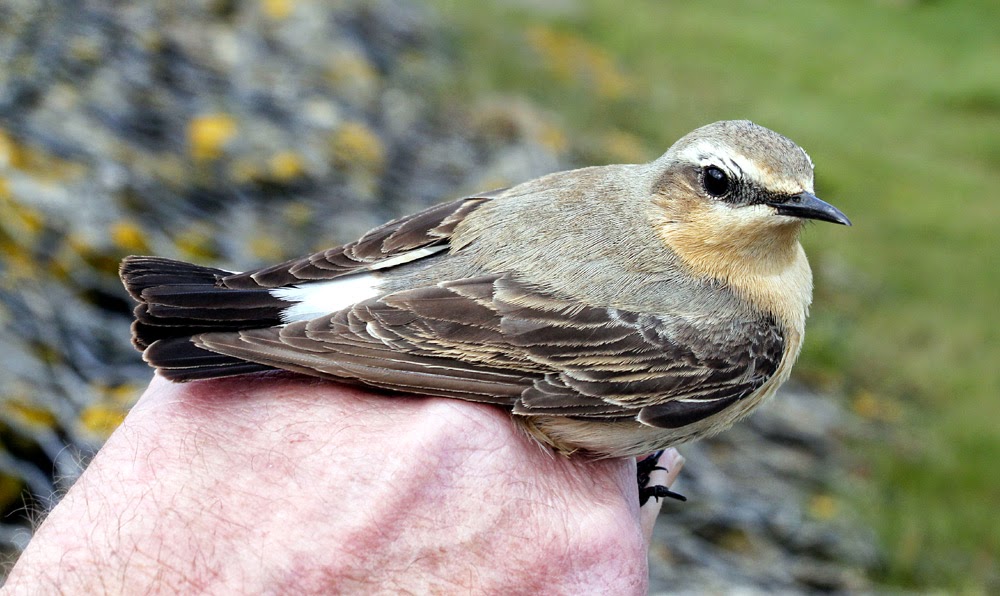Local birders have been reporting good numbers of Wheatears all week. There have been singles and good sized little gangs of them all along the coast and just inland with as few as one or two or up to 20 together. With the help of the trusty mealworms I decided to spend the afternoon on the Pilling patch to try and locate more Wheatears and maybe catch, ring and measure a few.
Mealworms
Near the sea wall at Fluke Hall was a gang of 7 or 8 Wheatears, all of bright colouring, large in stature and also highly mobile in their search for food. The rocks and stones of the sea wall have lots of crevices, nook and crannies where insects abound and where the high boulders provide great vantage points from which to survey the scene. The barbed wire fence and posts provide additional places to keep a lookout.
Wheatear
Wheatear
Within a minute I’d caught a large handful of a second-year female, one with a wing and weight of 100mm and 26gms respectively. The measurements immediately put her into the category of a “Greenland” type. I released her and she re-joined the other members of the gang by now some 50 yards west and heading towards Knott End.
Wheatear
I walked towards Pilling Water and where as a contrast to the Wheatear of Spring were 700+ Pink-footed Geese feeding on the marsh, still reluctant to head north to Iceland. A Buzzard flew from the wood and like me headed towards Pilling Water. It was about 1300 hours when a handful of Swallows arrived from the south and headed directly north across Morecambe Bay - diurnal migration in action.
Lapwings alerted me to something wrong. There was a Stoat carrying a tiny mammal, probably a vole, and running across the ploughed field which holds a couple of Lapwing nests. The Lapwings weren’t happy. The Stoat ran down into a wet ditch carrying the prey and disappeared from view.
Memo to self for later Googling - do Stoats eat their prey immediately? In mid to late April would they have the customary 6-10 kittens waiting for food in a nearby den?
Stoat
There was a Kestrel and 2 Little Egrets at Pilling Water and not much else save for a few Linnets and a single Wheatear moving up and down the usual line of rocks. This Wheatear wasn’t so easy and gave me the run-a-round for a while until succumbing to temptation. Being quite grey on the mantle and crown and with wing and weight of 97mm and 22.4 respectively I suspect it was a second year male nominate Oenanthe oenanthe. But birds in the hand can be deceiving, even more so at large in the field.
Best to let the experts out there decide next time they spot those Wheatears clambering over the rockery.
Wheatear
Please join Another Bird blog soon. There’s sure to be more rocking and rolling with Wheatears.
Linking today to Anni's Birding and Eileen's Saturday Blog.
Linking today to Anni's Birding and Eileen's Saturday Blog.















































































